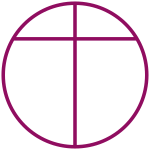Galleria Nazionale d'Arte Moderna
1883 establishments in ItalyArt museums and galleries in RomeArt museums established in 1883Modern art museums in ItalyNational museums of Italy ... and 2 more
Renaissance Revival architecture in ItalyRome Q. III Pinciano

The Galleria Nazionale d'Arte Moderna e Contemporanea ("national gallery of modern and contemporary art"), also known as La Galleria Nazionale, is an art gallery in Rome, Italy. It was founded in 1883 on the initiative of the then Minister Guido Baccelli and is dedicated to modern and contemporary art.
Excerpt from the Wikipedia article Galleria Nazionale d'Arte Moderna (License: CC BY-SA 3.0, Authors, Images).Galleria Nazionale d'Arte Moderna
Viale delle Belle Arti, Rome Pinciano
Geographical coordinates (GPS) Address Phone number Website External links Nearby Places Show on map
Geographical coordinates (GPS)
| Latitude | Longitude |
|---|---|
| N 41.917 ° | E 12.4821 ° |
Address
Galleria Nazionale d'Arte Moderna e Contemporanea
Viale delle Belle Arti 131
00197 Rome, Pinciano
Lazio, Italy
Open on Google Maps











